Studies on 1 & 2 Kings Collection (5 vols.)
Digital Logos Edition
Overview
Studies on 1 & 2 Kings Collection shows the relation between, the advantages of and the different methodologies used for understanding the text. Also discussed is the position of scribes and the role that the social location in the ancient Near East had in relation to the royal establishment of the day. A look at the narrative, rhetorical, ideological and sociological methods covered in 2 Kings 11–12 and how they are related is provided.
The translator of 1 Kings 1–11 was faced with the difficult task of establishing how to assess Solomon’s reign and the specific events that took place during that time. In Subversive Scribes and the Solomonic Narrative, Eric A. Seibert points out the information given 1 Kings is separated into two parts: one that is complimentary to the king and the other which shows the king in a negative light. These two views are discussed by Siebert.

Key Features
- Includes an in-depth analysis of 1 & 2 Kings
- Contains multiple appendices
- Each volume includes a list of abbreviations used
Product Details
- Title: Studies on 1 & 2 Kings Collection (5 vols.)
- Volumes: 5
- Pages: 1,112
Individual Titles
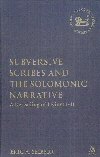
Subversive Scribes and the Solomonic Narrative considers 1 Kings 1–11 through the optics of propaganda and subversion with primary attention given to subversive readings of portions of the Solomonic narrative. Seibert explores the social context in which scribal subversion was not only possible but perhaps even necessary, and examines texts that covertly undermine the legitimacy or the legacy of Solomon.
The book is divided into two parts. In the first, Seibert develops definitions of propaganda and subversion and notes other studies which have understood certain biblical texts to function in these ways. Primary consideration is given to developing a theory of subversive scribal activity in this section of the book. An important distinction is made between “submissive scribes,” individuals who wrote what they were told, and “subversive scribes,” individuals who did otherwise. Since many scribes were writing for the very people who paid them, those wanting to engage in subversive literary activity had to do so carefully, and to a certain extent covertly, lest they be detected and exposed. Yet their critique could not be so obscure that none could detect it. There needed to be enough clues to allow like-minded scribes to read the text and appreciate the critique, but not so many that opponents could charge such scribes with sedition.
In the second part of the book, Seibert applies this theory of scribal subversion to various passages in 1 Kings 1–11. An extended discussion is given to 1 Kings 1–2 with the remainder of the Solomonic narrative being treated more episodically. The focus is on passages which look suspiciously like the work of a subversive scribe and/or which have subversive potential. It is argued that scribes could–and sometimes did–intentionally encode a critique of the king/kingship in the text and that one of the most effective ways they accomplished this was by cloaking scribal subversion in the guise of propaganda.
Eric Seibert is Assistant Professor of Old Testament at Messiah College, Grantham, Pennsylvania.
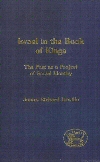
Linville argues that a new approach to the book of Kings is needed because of the failings of the usual historical–critical methods. He adopts a holistic approach which sees the book as a Persian-era text intended to articulate politically and religiously significant symbols within the book's monarchic history. These express the producer's reactions to important issues of Jewish identity in the continuing Diaspora and in Jerusalem. In the story of the schisms and apostasies of Israel's defunct monarchies both the Diaspora and cultural pluralism are legitimized. Rival versions of Israelite heritage are reconciled under an overarching sense of a greater Israelite history and identity.
Dr James R. Linville is Assistant Professor of Religious Studies in the Department of Religious Studies, University of Lethbridge, Canada.
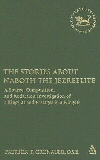
In this book, Cronauer proposes that a close source, composition, and redaction analysis of the Naboth material found in the books of Kings raises serious questions about the traditional interpretation of this material and of its dating to the time of Jehu. These questions have to do with the actual history behind this material, the history of the composition, redaction, transmission, and traditional dating of this material to the period of Jehu. He contends that there is sufficient evidence to challenge the traditional positions regarding these issues and to hypothesize a much more complex history of composition and redaction, and, a much latter dating for this material.
Rev. Patrick T. Cronauer, O. S. B. is Assistant Professor of Sacred Scripture and Biblical Languages at St. Vincent Seminary and the Department of Religious Studies, St. Vincent College in Pittsburgh, Pennsylvania
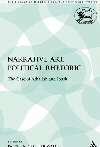
Narrative Art, Political Rhetoric looks into 2 Kings 11–12 and uncovers the issues and methodologies included in those chapters. Not only that, but the narrative, rhetorical, ideological and sociological methods are given an in depth look as to how these methods given in 2 Kings 11–12 are related.
Patricia Dutcher-Walls is the Dean of Students and Professor of Hebrew Bible at Vancouver School of Theology, Canada.
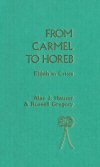
In this study, authors Hauser and Gregory focus on the life of the prophet Elijah in 1 Kings 17–19. Using a literary lens for interpretation, they examine images, themes, and the narrative style. Hauser presents an essay on the conflict between Yahweh and death as a character. He gives historical and cultural background, providing valuable context. He goes over setting, structure, key characters, and how the passage works as a story. Gregory focuses on irony and how the character of Elijah is revealed. He inspects theme and structure to deduce the meaning from a literary standpoint.
This title is included in the following collections
You can save when you purchase this product as part of a collection.
Logos 8 Messianic Jewish Diamo...
$2,999.99$2,999.99Logos 9 Messianic Jewish Diamo...
$2,999.99$2,999.992025 Messianic Jewish Portfoli...
$4,749.99$3,562.49Library of Hebrew Bible/Old Te...
$4,999.99$4,999.99
- $11,399.99
- $23,999.99$17,999.99
- $21,749.99
- $24,999.99